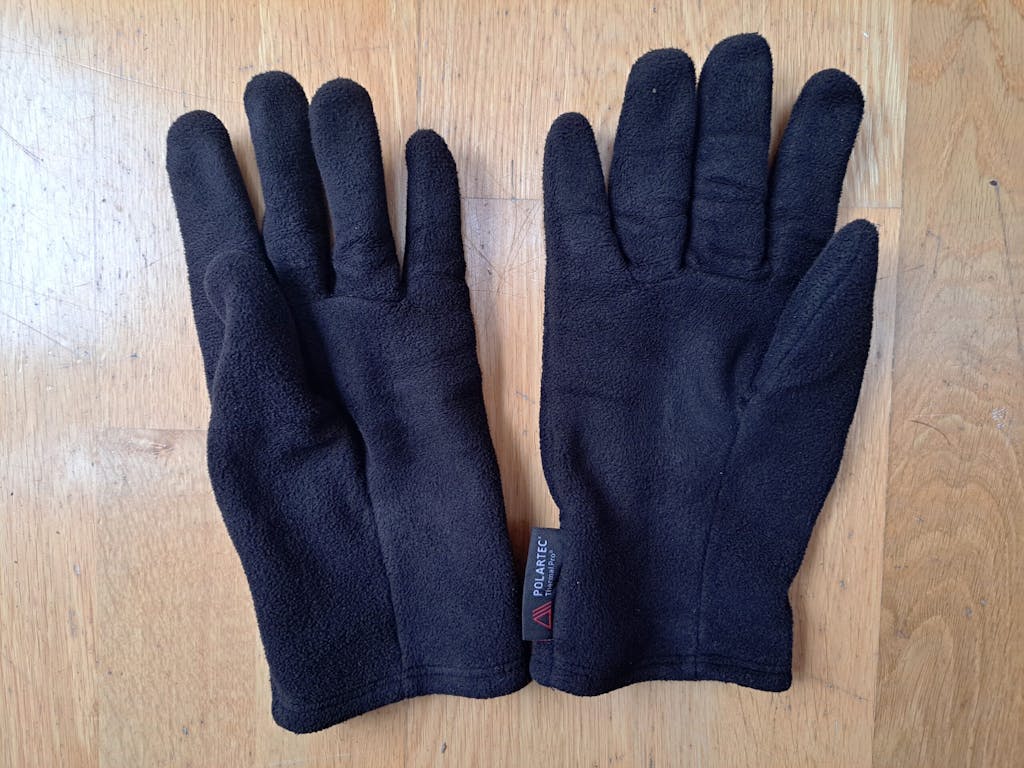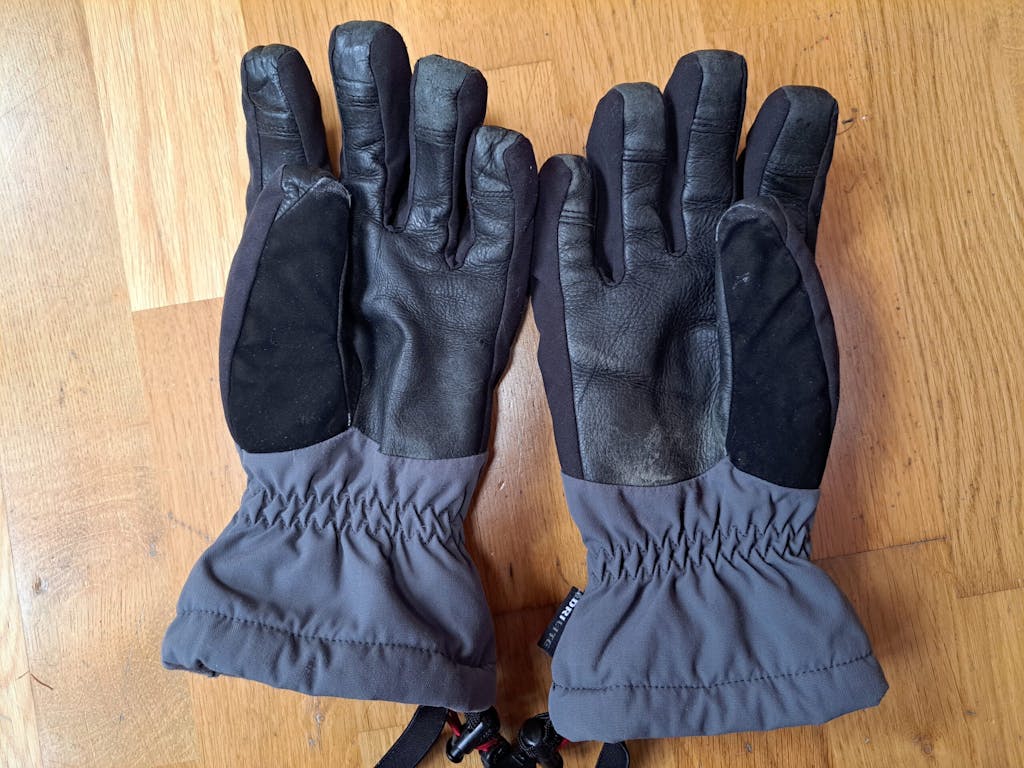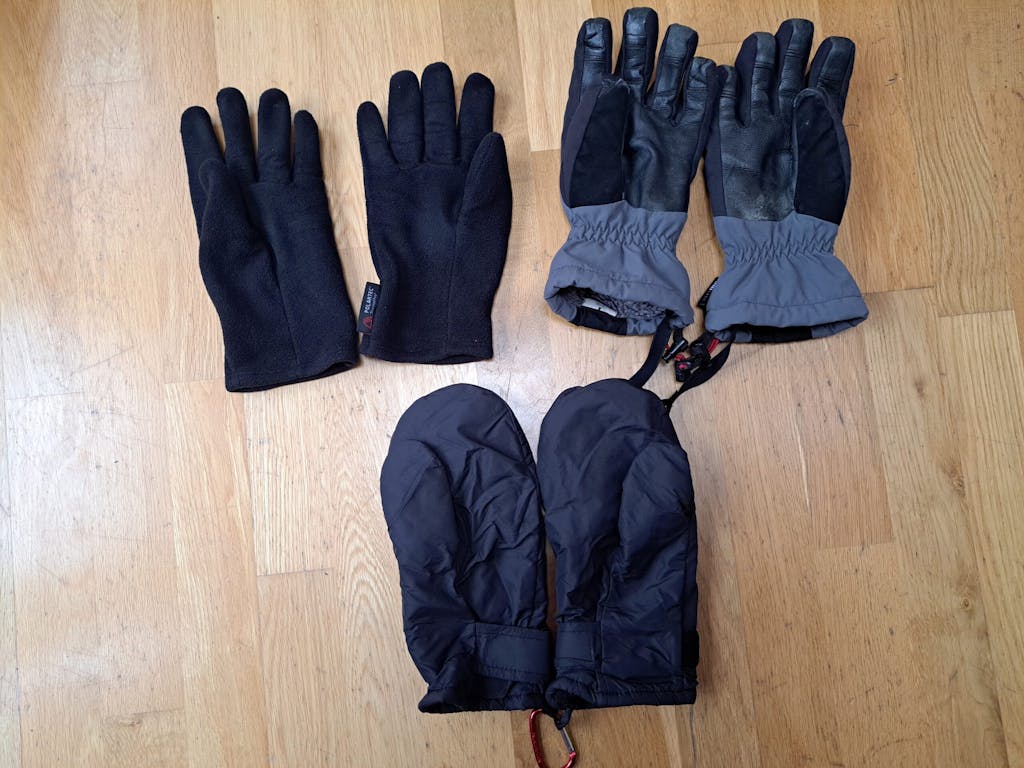Winter Gloves – making the right choice

I’m a bit of a winter glove obsessive.
I don’t know what it is, maybe it’s that I suffer with cold hands but I am constantly on the search for the perfect winter gloves and dip into outdoor stores regularly to check out the latest offerings.
So, what are the important features I am looking for when trying on new designs?
The gloves have ideally to be waterproof (though that is always difficult when there is a gaping hole where your hand goes in) be quick drying, have good insulation to keep your fingers warm, and have a reasonable amount of dexterity for doing fiddly tasks like opening rucksacks and tying in with the rope.
There is often a conflict between these features, a heavily insulated glove won’t give the optimum dexterity and a waterproof glove won’t be quick drying. Any winter glove therefore will be something of a compromise.

Fleece gloves are not well insulated and offer no protection from rain.
So, let’s begin with the standard fleece gloves.
They have some insulation and offer reasonably good dexterity; however, they are not in the least bit water resistant and will get wet very quickly. This renders them almost useless in winter and I am often replacing the soaking, cold fleece gloves of clients with a pair of my own winter gloves. Leave the fleece gloves at home in winter.
If, however, we cover our fleece gloves with a durable, wind resistant and water repellent outer layer we have the makings of a reasonable winter glove. Unfortunately, this will not provide enough insulation for the coldest mountain days and if sufficient insulation is added we lose the ability to close the hand and therefore that all-important dexterity.
It’s a fact that the palms of our hands are better protected against the cold than the back. Our fingers and palms have thicker skin and stores of fatty tissue, both of which will keep the palmar side insulated. In contrast the back of your hand has thinner skin and doesn’t have the same fat reserves as the palm, the blood vessels are also right underneath the skin. This makes the back of your hand much more sensitive to cold.
Good winter gloves will have thicker insulation on the back of the hand, often fibre pile, and thinner insulation on the palm side, either fleece or primaloft. This offers a good compromise giving reasonable dexterity combined with good insulation.

Insulated gloves with a gauntlet style cuff are essential in winter.
Our optimum winter glove is now beginning to take shape.
Further improvements can be made by extending the cuff below the wrist to make them into gauntlets. A lot of heat is lost through our wrists as major blood vessels lie close to the surface here. By extending the gloves in this way and adding an adjustable cinching cuff closure more heat is trapped inside.
Ideally, we would now add a waterproof membrane, like Gore-Tex, underneath the outer layer of our gloves. This would ensure they were waterproof as well as windproof. However, the benefits are somewhat limited as the large hole your hand goes in can also let in water. Waterproof gloves can take a very long time to dry out once they are soaked inside.
One solution is to wear water resistant gloves, with no membrane, and to change them for a dry pair half way through the day. They are cheaper than fully waterproof gloves but you would have to buy two pairs. It is always a good idea to carry at least 2 pairs of gloves in the winter anyway, in case you lose one during the day.

Carrying a selection of glove options is always a good idea when hiking in winter.
You can further enhance your glove options by wearing thin liner gloves under your thicker gloves. This gives you an extra layer of insulation as well as some protection for your hands if you have to take off your outer pair. If you take this option you will need to buy gloves bigger than usual to accommodate the liners. Note that if your gloves are too tight they will restrict the blood circulation and compress the insulation so it becomes less effective.
It is also very difficult to get wet hands into tight fitting gloves.
Finally, you can always opt for mittens.
They offer extremely good insulation and are windproof and water resistant. However, you lose all dexterity and you will have to remove them to perform any tasks with your fingers. In very cold weather oversize mittens can be slipped over existing gloves temporarily to rewarm cold hands and I have seen them used successfully for this purpose.
Ultimately our glove choices will depend on need, the tasks we want them to perform and available funds.
But remember, numb unresponsive fingers are very debilitating, so choose carefully.
Russ Mills owns and runs Mountaintrails.ie, a guided hiking and mountain training business based in Dublin.
